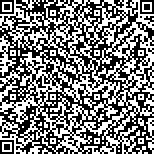张雪滢,何娜,黄艳.KidGo外骨骼康复机器人训练对痉挛型脑性瘫痪患儿下肢运动功能的影响[J].中华物理医学与康复杂志,2024,46(2):129-133
扫码阅读全文

|
| KidGo外骨骼康复机器人训练对痉挛型脑性瘫痪患儿下肢运动功能的影响 |
|
| |
| DOI:10.3760/cma.j.issn.0254-1424.2024.02.006 |
| 中文关键词: 康复机器人 脑性瘫痪 肌张力 肌力 运动功能 |
| 英文关键词: Rehabilitation robots Cerebral palsy Muscle tone Muscle strength Motor function |
| 基金项目: |
|
| 摘要点击次数: 3355 |
| 全文下载次数: 3447 |
| 中文摘要: |
| 目的 观察KidGo外骨骼康复机器人训练对痉挛型脑性瘫痪患儿下肢运动功能的影响。 方法 选取2022年9月至2023年6月在山东大学附属儿童医院康复科住院的痉挛型脑性瘫痪患儿30例,按照随机数字表法将其分为对照组和机器人组,每组15例。两组患儿均进行常规康复,机器人组在此基础上给予KidGo外骨骼康复机器人训练,每日训练30 min,每周5 d,连续12周。干预前及干预12周后(干预后),采用表面肌电分析系统、手持肌力测试仪、粗大运动功能评定量表(GMFM)、Berg平衡量表(BBS)、儿童功能独立性评定量表(WeeFIM)对两组患儿的下肢肌张力和肌力、粗大运动功能、平衡能力、功能独立性进行评定。 结果 与组内干预前比较,两组患儿的下肢肌张力和肌力、粗大运动功能、平衡能力、功能独立性均有所改善(P<0.05)。与对照组干预后比较,机器人组患儿的腘绳肌[(11.02±4.66)μV]和腓肠肌肌张力[(10.96±4.06)μV]改善优异(P<0.05),屈髋肌群[(35.84±9.96)N]、伸髋肌群[(33.47±10.2)N]、屈膝肌群[(34.93±14.44)N]、伸膝肌群[(41.61±9.38)N]、踝跖屈肌群肌力[(40.91±9.93)N]改善较为优异(P<0.05),GMFM-D[(19.07±5.56)分]、GMFM-E[(25.87±6.61)分]、BBS[(25.27±10.3)分]、WeeFIM评分[(41.47±11.65)分]均较高(P<0.05)。 结论 在常规康复的基础上辅以KidGo外骨骼康复机器人训练,能够有效改善痉挛型脑性瘫痪患儿的下肢肌张力和肌力、粗大运动功能、平衡能力、功能独立性。 |
| 英文摘要: |
| Objective To observe any effect of using the KidGo exoskeleton rehabilitation robot on the lower limb motor function of children with spastic cerebral palsy. Methods Thirty children with spastic cerebral palsy were sorted at random into a control group and a robotics group, each of 15. Both groups received conventional rehabilitation 5 days a week for 12 weeks, but the robotics group also spent 30 minutes daily training with the KidGo exoskeleton robot. Before and after the intervention, the lower limb muscle tone and strength, gross motor function, balance, and functional independence of both groups were assessed using surface electromyography, a handheld muscle strength tester, the gross motor function measure, the Berg Balance Scale, and the Wee-functional independence measure. Results After the intervention great improvements in average lower limb muscle tone and strength, gross motor function, balance, and functional independence were observed in both groups, but the improvements in the robotics group were significantly greater, on average. Conclusion Supplementing conventional rehabilitation with training using the KidGo exoskeleton rehabilitation robot can better improve muscle tone, strength, gross motor functioning, balance, and the functional independence of children with spastic cerebral palsy. |
|
查看全文
查看/发表评论 下载PDF阅读器 |
| 关闭 |
|
|
|